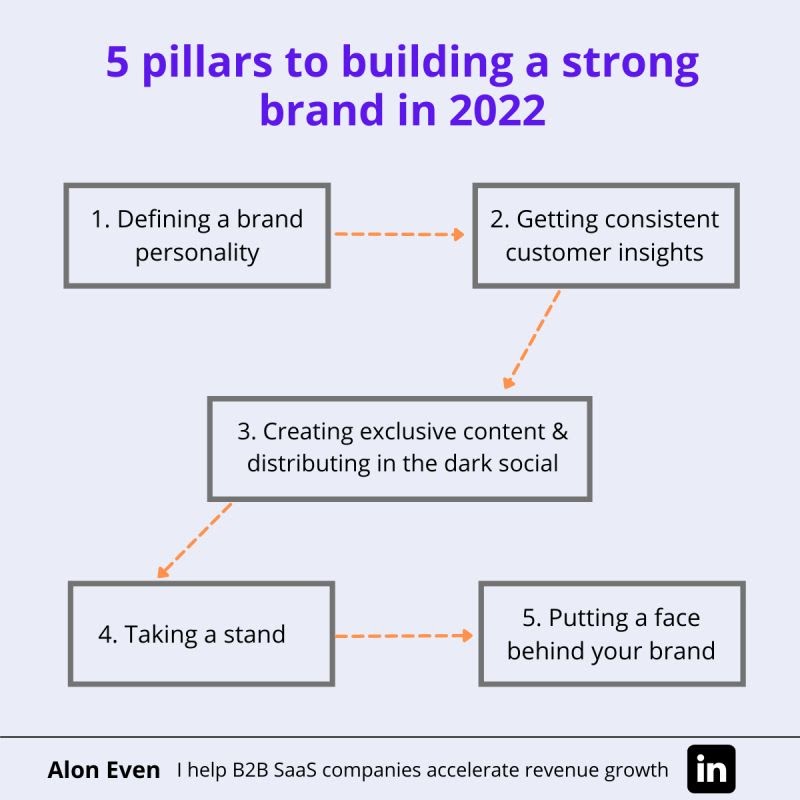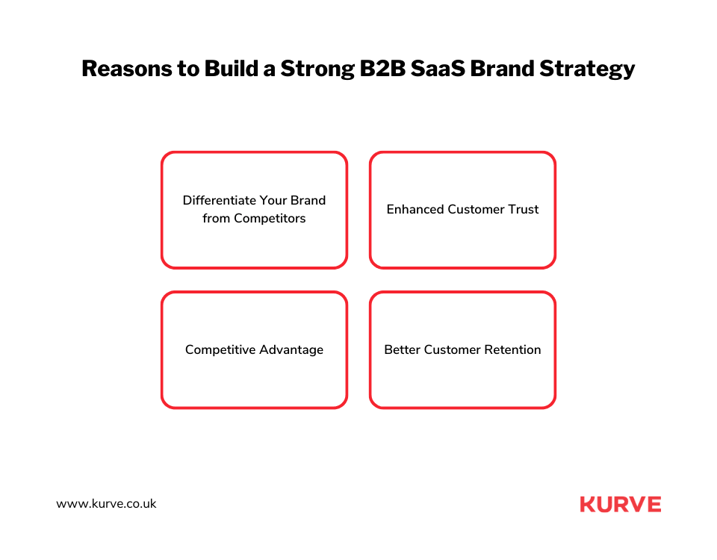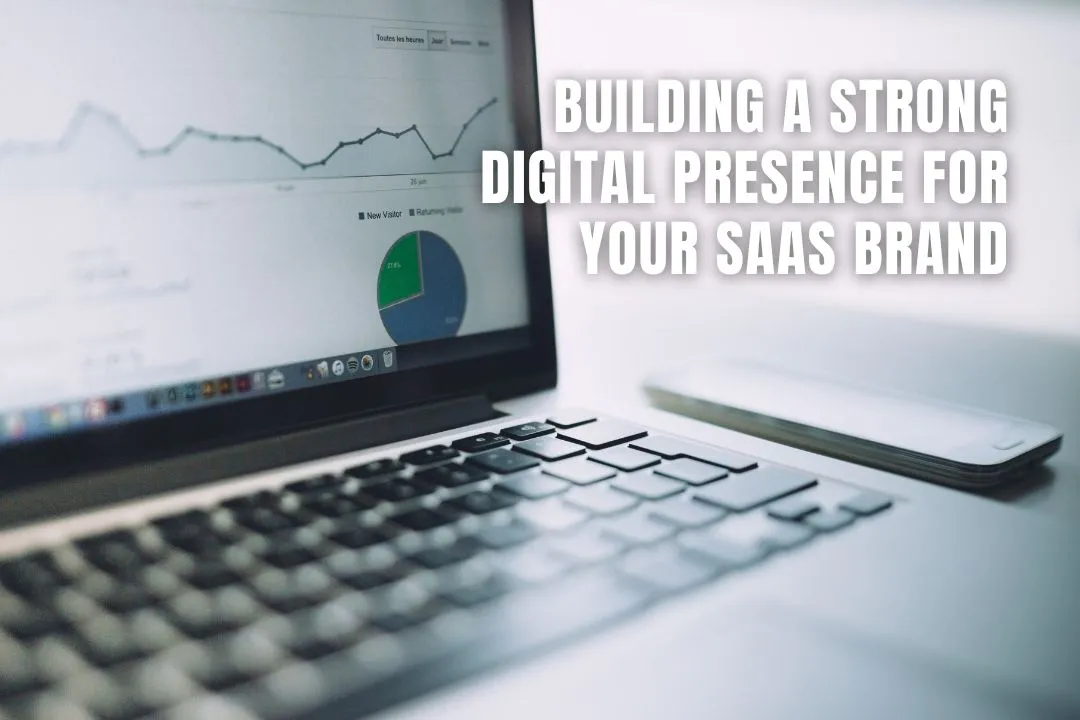Creating a strong SaaS brand requires a clear value proposition and consistent messaging. Focus on customer needs and brand differentiation.
Establishing a robust SaaS brand involves several crucial steps. First, identify your target audience and understand their pain points. Tailor your messaging to address these issues effectively. A compelling value proposition sets you apart from competitors. Consistent branding across all channels builds recognition and trust.
High-quality customer service fosters loyalty and positive word-of-mouth. Utilize content marketing and social media to engage and educate your audience. Regularly gather feedback to improve your offerings. Investing in SEO ensures your brand is easily discoverable online. By focusing on these strategies, you can create a memorable and impactful SaaS brand that resonates with customers.
Introduction To Saas Branding
Building a strong SaaS brand is crucial for success. A strong brand helps you stand out. It builds trust with your audience. This section will guide you through the basics of SaaS branding.
Importance Of Branding
Branding is the backbone of your SaaS business. It differentiates you from competitors. A strong brand builds customer loyalty. It enhances your reputation. Branding also impacts customer perception and can drive sales.
- Differentiation: Sets you apart from others.
- Customer Loyalty: Keeps customers coming back.
- Reputation: Builds a positive image.
- Customer Perception: Influences how customers see you.
- Sales: Drives revenue growth.
Unique Challenges In Saas
SaaS companies face unique branding challenges. Unlike physical products, SaaS services are intangible. This makes it harder to show value. Rapid technological changes also pose challenges.
| Challenge | Description |
|---|---|
| Intangibility | Services are not physical, hard to showcase value. |
| Technological Changes | Frequent updates and changes can confuse customers. |
| Customer Trust | Building trust online is more difficult. |
Overcoming these challenges requires a strategic approach. Focus on clarity, consistency, and customer engagement.
Identifying Your Target Audience
Creating a strong SaaS brand begins with identifying your target audience. Knowing your audience allows you to tailor your marketing efforts and product features. This ensures you meet the specific needs of your users.
Market Research
Conducting thorough market research is essential. Start by analyzing your industry. Look at your competitors and understand their audience. Use tools like Google Analytics and SEMrush to gather data.
Create a table to summarize your findings:
| Competitor | Audience Demographics | Key Features |
|---|---|---|
| Competitor A | Small Businesses, 25-45 years | Easy Integration, Affordable Pricing |
| Competitor B | Mid-size Companies, 30-50 years | Advanced Analytics, Robust Security |
Customer Personas
Creating detailed customer personas helps in understanding your audience better. These personas represent your ideal customers. They include demographic information, pain points, and goals.
Follow these steps to create effective customer personas:
- Gather data from surveys and interviews.
- Identify common traits among your users.
- Define their challenges and how your product solves them.
Include elements such as:
- Demographics: Age, gender, location
- Behaviors: Online habits, purchase patterns
- Goals: What they aim to achieve
Here is an example of a customer persona:
| Attribute | Details |
|---|---|
| Name | John Doe |
| Age | 35 |
| Occupation | Small Business Owner |
| Goals | Increase efficiency, reduce costs |
| Pain Points | Time management, budget constraints |
Crafting A Compelling Value Proposition
Creating a strong SaaS brand requires a compelling value proposition. This defines what makes your product unique. A value proposition tells customers why they should choose your SaaS solution.
Defining Core Values
First, identify your SaaS product’s core values. These values should reflect your brand’s mission. They should also address customer needs. Core values guide your brand’s message and tone.
| Core Value | Customer Benefit |
|---|---|
| Innovation | Offers cutting-edge solutions |
| Reliability | Ensures consistent performance |
| User-Friendly | Makes it easy to use |
Communicating Benefits
Clearly communicate the benefits of your SaaS product. Focus on solving customer problems. Highlight how your product saves time or money.
- Ease of Use: Simple and intuitive interface.
- Cost Efficiency: Reduces operational costs.
- Scalability: Grows with your business needs.
Use straightforward language. Avoid jargon. Make your value proposition easy to understand. Your goal is to make potential customers say, “I need this!”
These steps help in crafting a compelling value proposition. This is vital for a strong SaaS brand.

Credit: www.business2community.com
Developing A Visual Identity
Creating a strong visual identity is crucial for any SaaS brand. It helps in building recognition and trust among users. A well-thought-out visual identity can set you apart from competitors. Let’s dive into the key components of developing a visual identity.
Logo And Color Scheme
Your logo is the face of your brand. It should be unique and memorable. Choose a design that reflects your brand’s values and mission. A good logo is simple yet impactful.
The color scheme plays a significant role. Colors evoke emotions and can influence user behavior. Choose a primary color and a few complementary colors. Ensure they align with your brand’s personality.
| Element | Tips |
|---|---|
| Logo | Simple, Memorable, Reflective of Brand Values |
| Color Scheme | Emotionally Resonant, Complementary Colors, Brand Alignment |
Typography And Imagery
Typography is more than just fonts. It encompasses the style, arrangement, and appearance of text. Choose fonts that are readable and consistent with your brand’s tone. Avoid using too many different fonts.
Imagery includes photos, illustrations, and icons. Use high-quality images that resonate with your audience. Ensure all visuals are consistent in style and quality. This creates a cohesive look and feel.
- Readable Fonts
- Consistent Style
- High-Quality Images
- Resonant with Audience
Building A Consistent Brand Voice
Creating a strong SaaS brand requires a consistent brand voice. A uniform voice helps build trust and loyalty among your audience. This section will discuss how to establish and maintain a consistent brand voice for your SaaS company.
Tone And Style
The tone and style of your brand should reflect your company’s values and mission. Consider the following factors:
- Audience: Understand who your target audience is.
- Purpose: Define the main goal of your communication.
- Personality: Decide if your brand will be formal or casual.
Your tone could be:
- Friendly: Use simple words and a conversational style.
- Professional: Maintain a formal and authoritative tone.
- Playful: Include humor and light-hearted language.
Choose a tone that resonates with your audience. Stick to it across all platforms.
Content Guidelines
Establish content guidelines to ensure consistency. These guidelines should cover:
- Vocabulary: Create a list of approved words and phrases.
- Formatting: Define rules for headings, lists, and tables.
- Visuals: Specify the style of images and graphics.
Here is an example of a simple content guideline table:
| Aspect | Guideline |
|---|---|
| Vocabulary | Use “customer” instead of “client”. |
| Formatting | Headings should be in bold and centered. |
| Visuals | Use high-quality images with a blue color scheme. |
Implement these guidelines to keep your brand voice uniform. Regularly update them to adapt to changes.

Credit: kurve.co.uk
Leveraging Content Marketing
Content marketing is a powerful tool for building a strong SaaS brand. It helps attract, engage, and retain customers. By creating valuable content, you can position your brand as an industry leader. Let’s explore how you can leverage content marketing effectively.
Blogging And Articles
Blogging is essential for SaaS businesses. It improves search engine rankings and drives traffic. Write blog posts on topics that address your audience’s pain points. This will help them find solutions through your product. Use keywords that your audience searches for. This will improve your SEO.
Articles are another great way to share knowledge. Publish articles on platforms like Medium and LinkedIn. This expands your reach and builds credibility. Ensure your articles are well-researched and offer actionable insights.
Video And Webinars
Videos engage users more than text. Create tutorials and product demos to showcase your SaaS features. Use platforms like YouTube and Vimeo to host your videos. This will improve visibility and attract potential customers.
Webinars offer a live, interactive experience. Host webinars to discuss industry trends and best practices. Invite experts to share their insights. This adds value to your audience and builds trust in your brand.
| Content Type | Benefits |
|---|---|
| Blogging | Improves SEO, drives traffic, addresses pain points |
| Articles | Builds credibility, expands reach, offers insights |
| Videos | Engages users, showcases features, improves visibility |
| Webinars | Interactive, discusses trends, builds trust |
Leverage these content types to create a strong SaaS brand. Your audience will appreciate the value you provide.
Utilizing Social Media
Creating a strong SaaS brand is vital for growth. Social media offers powerful tools to reach your audience. Engaging with users on social platforms builds trust and loyalty. Let’s explore how to make the most of social media for your SaaS brand.
Platform Selection
Choosing the right platforms is crucial. Each platform serves different purposes. Here’s a quick guide:
| Platform | Primary Use | Audience |
|---|---|---|
| Professional networking | B2B, professionals | |
| Real-time updates | Tech-savvy users | |
| Community building | General audience | |
| Visual content | Younger audience |
Engagement Strategies
Engagement is key to social media success. Here are some strategies:
- Post Consistently: Regular updates keep your audience engaged.
- Use Visuals: Images and videos attract more attention.
- Respond Promptly: Quick replies build trust with your audience.
- Run Polls: Polls are great for audience interaction.
- Share User Stories: Highlight customer success stories.
These strategies help build a strong SaaS brand. Social media is a powerful tool. Use it wisely to connect with your audience.
Measuring Brand Success
Understanding how well your SaaS brand is performing is vital. This helps you understand where improvements are needed. Measuring brand success involves tracking key metrics and gathering customer feedback.
Key Metrics
Key metrics provide measurable data. These metrics show how your brand is performing. Here are some important metrics:
- Customer Acquisition Cost (CAC): The cost to acquire a new customer.
- Customer Lifetime Value (CLV): The total revenue from a customer over their lifetime.
- Churn Rate: The percentage of customers who stop using your service.
- Net Promoter Score (NPS): Measures customer loyalty and satisfaction.
- Monthly Recurring Revenue (MRR): Predictable revenue expected every month.
Customer Feedback
Customer feedback is crucial for understanding user satisfaction. Feedback helps identify strengths and weaknesses. Here are some ways to gather feedback:
- Surveys: Use surveys to collect detailed responses from users.
- Reviews: Monitor reviews on platforms like G2 and Capterra.
- Social Media: Track mentions and comments on social media platforms.
- Customer Support: Analyze interactions with your support team.
| Metric | Description |
|---|---|
| CAC | Cost to acquire a new customer |
| CLV | Total revenue from a customer over their lifetime |
| Churn Rate | Percentage of customers who stop using your service |
| NPS | Measures customer loyalty and satisfaction |
| MRR | Predictable revenue expected every month |
Adapting And Evolving
Creating a strong SaaS brand requires constant adaptation. The market changes rapidly. Your brand must evolve to stay competitive. This involves staying relevant and continuously improving your offerings.
Staying Relevant
Staying relevant means keeping up with industry trends. It also means understanding customer needs and preferences. Regularly gather feedback from your users. Use this data to make informed decisions.
- Track industry news and updates.
- Analyze competitors and their strategies.
- Engage with customers on social media.
These actions help you stay ahead. They ensure your brand remains appealing to your audience.
Continuous Improvement
Continuous improvement is key to a strong SaaS brand. Regularly update your product features. Fix bugs promptly and enhance user experience. This shows you care about quality.
Consider implementing a feedback loop. This helps in identifying areas for improvement. It also fosters a culture of innovation within your team.
| Action | Benefit |
|---|---|
| Regular updates | Keeps product fresh and relevant |
| Bug fixes | Improves user satisfaction |
| User feedback | Drives innovation |
Implement these practices to ensure your SaaS brand stays strong. Focus on both staying relevant and continuous improvement. This will help you build a lasting brand.
Case Studies Of Successful Saas Brands
Learning from others helps create a strong SaaS brand. Case studies offer insights into strategies and techniques that worked. Below are two examples of successful SaaS brands.
Example 1: Slack
Slack transformed how teams communicate. It started as an internal tool. Today, it is a leading SaaS brand.
- User-friendly Interface: Easy to navigate and use.
- Integration: Connects with other tools like Google Drive and Trello.
- Scalability: Works for small teams and large enterprises.
Slack’s success lies in understanding user needs. They focused on simplicity and efficiency. Their marketing targeted both small and large businesses.
| Feature | Benefit |
|---|---|
| Channels | Organized communication by topics |
| Search | Find past messages easily |
| Notifications | Stay updated in real-time |
Example 2: Salesforce
Salesforce is a giant in the SaaS industry. It offers CRM solutions to businesses worldwide.
- Cloud-Based: Access from anywhere.
- Customization: Tailor features to business needs.
- Analytics: Provides valuable insights.
Salesforce focuses on customer success. They provide extensive support and resources. Their ecosystem includes a wide range of apps and services.
| Service | Advantage |
|---|---|
| Sales Cloud | Boosts sales productivity |
| Service Cloud | Improves customer service |
| Marketing Cloud | Enhances marketing campaigns |

Credit: www.linkedin.com
Frequently Asked Questions
How To Build A Strong Saas Brand?
Creating a strong SaaS brand involves clear messaging, consistent visual identity, and excellent customer service. Focus on solving customer pain points. Establish trust and credibility. Use social proof and testimonials. Regularly engage with your audience.
What Are Key Elements Of Saas Branding?
Key elements include unique value proposition, consistent branding, and customer-centric approach. Use a memorable logo and tagline. Invest in professional website design. Maintain a strong online presence.
Why Is Saas Branding Important?
SaaS branding differentiates your product in a competitive market. It builds trust and loyalty. Strong branding attracts and retains customers. It enhances perceived value and credibility. Branding supports long-term business growth.
How Can Saas Companies Build Trust?
Build trust through transparency, quality service, and customer testimonials. Offer free trials or demos. Provide excellent customer support. Regularly update and improve your product. Show industry expertise with blogs and case studies.
Conclusion
Building a strong SaaS brand requires consistency, innovation, and customer focus. Keep your messaging clear and your values evident. Engage with your audience through quality content and responsive support. Prioritize user experience and gather feedback for continuous improvement. A strong brand will set you apart in the competitive SaaS market.
